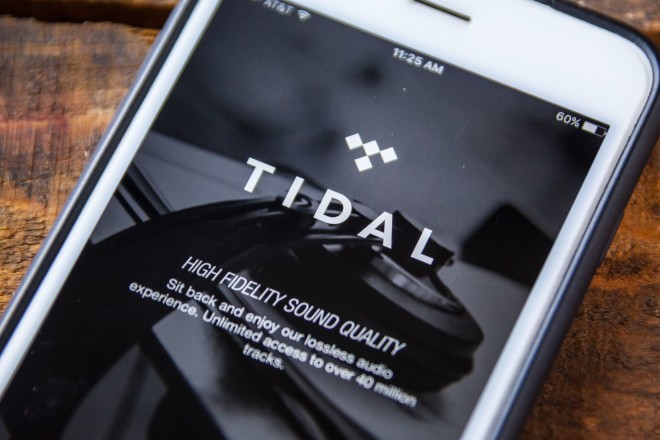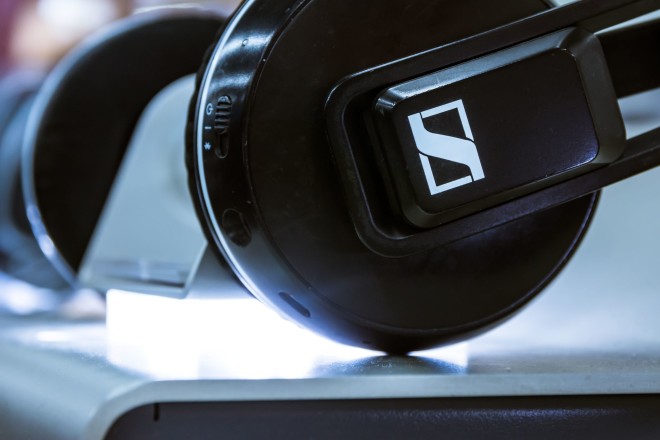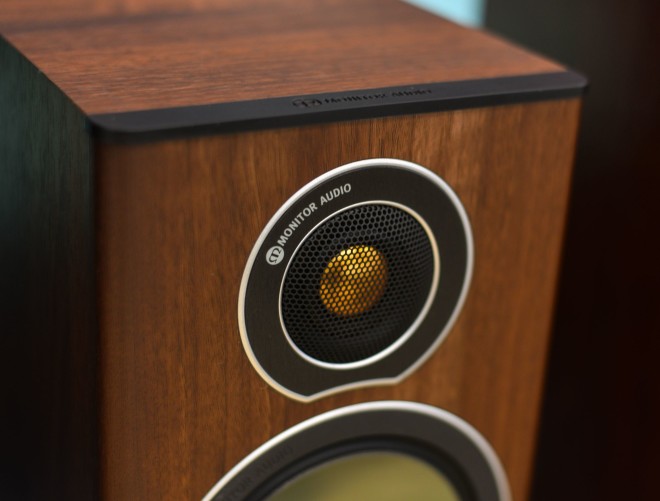Neil Young not only looks a little grumpy in his old years but is also known for being a straight shooter. Naturally, he also has an opinion on streaming offers–most of them are not his thing. He criticized the sound quality in several of his interviews. What he meant is that most services only support lossy audio formats, like AAC, MP3 or Ogg Vorbis, which, although they sound great, don't offer the full lossless audio experience. Enter Tidal, a lesser known rival that seeks to score with hi fi quality. Let's take a look!

This is a streaming service, so an internet connection is an essential requirement–along with either a PC (Windows or MAC), a cellphone (Android 4 / iOS 8 or higher) or any internet-capable media player. The Windows app looks rather nice but, naturally, browser-based music playback is also supported. The Android app looks eerily familiar. Small wonder, since Tidal's taken one, or rather two, pages out of Spotify's book. If you've ever used the app of the Swedish market leader before, you'll instantly find your way around Tidal's player. It's fairly dark but makes good use of contrasts and intuitively guides you to your desired features. Readability is okay, even in direct sunlight. If touch-based controls are not your forté, you can always go back to point-and-click on your PC–and enjoy an even more organized user interface. It's actually fun to click through the various menus and discover the available options.
While Tidal initially met with heavy criticism, the bottom line being that they "only" offer music, the company has been making significant improvements ever since. Their interface is now teeming with playlists, suggestions, charts, genres and new titles. It clearly shows that a sizable and knowledgeable team of curators is working behind the scenes. Once you've played a song, you're usually presented with meaningful recommendations to continue your musical journey. And with autoplay enabled, the app will competently provide the background music for your day. Creating playlists is fast, users are even presented with a personal mix, based on previously played songs and augmented with similar fitting titles.
The song and audio book collection itself is vast. Over 60 million titles make sure you'll never miss a beat–compare that to Spotify's already extensive library of "just" 50 million. Even my beloved indie bands and other exotic or long forgotten songs are covered. From Icelandic artists, like Hilmar Örn Hilmarsson, Mongolic rock bands, like Yat-Kha, to modern classics, like Arvo Pärt, they're all there–including the big names, of course. As far as numbers go, I didn't really notice the 10 million additional songs compared to Spotify. Both libraries are simply humongous. And Tidal adds an additional 240,000 music videos that may appeal to a younger audience. Maybe it's their attempt at compensating for the slow death of music-based TV.

Downloading songs on the go with Tidal is a bit of an adventure. That's because hi-fi-quality tracks take up considerable space! Four minutes of play time amount to roughly 40 MB! So you'd better have a decent cellphone carrier and plan or run for the next WiFi hotspot whenever you're downloading. In contrast, the same song encoded as AAC at 320 kbit/s (the highest setting with most services) takes up roughly a quarter of that size, an eighth at "YouTube" quality. Sure, you can download your songs beforehand over WiFi but even then you'll notice the size difference. If you're used to carrying around 100 albums on your cellphone, you may quickly hit the storage limit of your device.
Let's get to the heart of Tidal now: hi-fi audio quality. On Windows, Android and Linux, the service relies on the popular Free Lossless Audio Codec (FLAC). iOS and macOS users receive files encoded as ALAC (Apple Lossless Audio Codec). Both formats are lossless and well-established in the hi-fi scene. So can you hear the difference between lossy compression, as found with other services, and lossless formats? Absolutely! Tidal supports different quality settings: Normal, High (equates to 320 kbit/s) and HiFi/Master, and I couldn't wait to compare the latter two. And what can I say, the results are stunning. John Williams' "Harry Potter" theme never sounded so crystal clear and detailed and the same goes for "Music for Airports" by Brian Eno or "The Very Best Of the Alan Parsons Project". As I am presently working from home, I only have a Teufel 5.1 surround and a Harman Kardon stereo system for tests at my disposal. Still, in both cases the music sounds like an invisible veil has been lifted. The strange thing is, as long as you're unaware of the difference, you'll hardly notice it. But once you've heard it, you'll be able to spot the loss in "lossy format" straight away.

Let's be realistic: If you're mostly listening to contemporary music through $20 headphones or have your songs play in the background, save yourself the money. 320 kbit/s will be perfectly fine for your needs (and that of most other music fans). Even YouTube, which offers 192 kbit/s AAC audio at max, is good enough for most users. And don't forget: Hi-fi audio only makes sense when played through hi-fi equipment or you'll lose all the advantages. My cheap Bluetooth headphones, for example, don't meet the specs required for hi-fi audio to begin with, unlike my Sennheiser RS195. But it's not only hardware that comes into play here. The songs themselves also have to be produced with hi-fi in mind, which is most definitely not the case with today's Pop music that has been specifically arranged to sound half-way decent even when played through your kitchen radio or low-budget headphones. So old recordings by, say, AC/DC will sound just fine but sophisticated multi-track recordings, like Queen's repertoire or Orchestra music, won't. Lossy formats have to trim audio by definition. That's okay for some songs but an outright crime for others. I'm sure, Neil Young and the growing community of audiophiles will agree!
Naturally, this added quality comes with a (steep) price! Unlike Spotify, there's no free ad-based listening with Tidal. Maybe, they don't want to devalue their service with ads. TIDAL Premium (320 kbit/s AAC) is $9.99 per month and comparable to Spotify Premium or Apple Music. TIDAL HiFi sets you back a whopping $19.99 a month, which feels too expensive for me. A music streaming service that costs as much as Amazon Prime and Netflix combined certainly takes some getting used to. And once you add the fact that Amazon's Music Unlimited offers CD-quality music for just $12.99 a month, you'll be scratching your head even more.
So I'm on the fence about this one. Tidal offers a high-quality curated package distributed through decent apps. Everything feels well-thought-out and smooth. But their default quality setting is readily available elsewhere and the HiFi subscription type is simply too expensive for the masses. If you're interested, make sure to use their 30-day free trial period and look out for special offers.
What I would like to know: Would you consider switching to Tidal? Are you already using music streaming services?




I have been using Spotify for 4 years ,but recently I found the good audio quality from Tidal ,it is really attract me so I use Tunelf Spotify Music Converter to download Spotify music offline on my PC now I decided not to pay for Spotify premium.
As for me, Spotify Free is enough. To use the Spotify Premium features such as offline listening, ads-free, unlimited skips, etc., it doesn't need to pay for the Premium. Just to download Spotify tracks by AudKit Spotify Music Downloader. The downloaded songs are ads-free and available to play offline.
I am using Tidal now and it works quite better. And to enjoy Tidal music easier, I also use the tool DRmare Tidal MP3 Converter to help me. With it, I can convert Tidal music to other audio files locally and save them to my computer for using anywhere and wanytime.
The free version of Spotify is ad-supported much like a radio station. So, if you are a free user, you cannot enjoy lots of additional features for premium users. But with the help of Tunelf Spotify music converter, you can listen to Spotify music without the distraction of ads and skip as many songs as you want, as well as play music with no phone service. What's more, you can rip mp3 from Spotify or other plain formats. Just try it out.
I use spotify, which has a free version. If you like it, you can ask for a premium account.
Tidal does not offer a free account, just try for 30 days. The cost is less than spotify, at least in Argentina. Nice article. Greetings from Argentina
Thanks for your nice sharing! I'm just new to Tidal. For Tidal, I learned that its music can't be played outside Tidal app.
I wonder if there is any way to help me play Tidal music on my MP3 player? I searched on Google and found some tools like AudFree Tidal Audio Converter, music converter, etc. But don't know which one is the best.
It's interesting to read comments about $19.99 being too expensive. What does that say about perceived value? Does $19.99 to have access to thousands of tracks not represent good value?
The cost of ONE CD is around £8 - £10 GBP, so buying only two CDs each month costs about the same or more than practically unlimited streams.
Of course, the difference is that you can keep the CDs for as long as you want them for, and maybe sell them when you don't want them any longer. Subscriptions are merely rentals.
Thank you Sven,
I do not like the sound of what I call, 'un-natural' music from a radio, smart 'phone, cheap stereo/surround system, or other weak sound source, especially with the best of the best headphones which can't turn a bad sound into a good sound.
Streaming music is nice, if you need that feature. Getting the service to pause so you can use your phone, is another thing. I have also come across ads in premium pay services. I haven't tried Tidal to see if that is the case with them as well.
Paying that much for a music service isn't what I'm interested in. I rarely use Youtube's service, which was okay enough with a commercial or two from time to time.
Because the player/service may or may not quiet down so I can use the phone, I brought all of my songs to an older phone that has a great player on it.
The files need to be WMA, which isn't bad through midgrade wireless or my Koss premium headphones.
Seeing this is the same for the car stereo, it's "nothing" to stream from the phone, or any device.
For "real" headphone listening, I am plugged in to my computer, using an external sound card. I use an expanding software from A shampoo, on the computer that doesn't have an external sound card.
I don't trust the services to stream quality, & I sure don't want to pay a premium price for low quality music. I rarely use my quality headphones on my cellular service & take a walk. I leave good (wav or enhanced cd) listening for home, & stream my own from my collection.
If there are any jitters from stalled downloads, I know it's something that I can fix.
I would not switch to Tidal; Amazon Music Unlimited already offers a cd quality sound; $19.99 a month is too much; and I'm almost 60 and my ears aren't what they used to be so I doubt I would hear any difference as I can't tell the difference between the sound of a tracked recorded at high res like 24/96 and an MP3 320. I use Amazon Music Unlimited which I have some issues with though, such as, the best albums by some artists not being offered, albums regularly just disappearing from their catalog (like all Andreas Vollenweider albums but one disappeared one day) which is not cool in my book. I don't think any of the services is perfect.
@Mike Nelson,
Bandcamp claims to give 80% + of every dollar spent to artists.
I did write a comment earlier about the two. It hasn't been approved at the time of writing this comment.
I always enjoy reading your blog posts. I come at Tidal from the perspective of an old-fashioned heavy purchaser of music on CD & vinyl.
My CD purchasing is now almost exclusively directly from artists at concerts (before the present virus constraints obviously). I continue to spend quite heavily on vinyl.
My monthly Tidal Hi-Fi subscription costs slightly more than a single CD and less than a vinyl album. I think that represents fantastic value.
I particularly value receiving my regular music magazines through the mail and sitting down with Tidal open and checking out new music reviews in real time.
All the best
John
I would like to test the product and write my own review, but TIDAL does not give a trial plan, ro be used for this reason.
Tidal is great, but $240 per annum is just a little steep.
The cost is prohibitive on a fixed budget. So with all things new, there's a curve to beat & this has a long uphill climb to be in a very competitive market. Reducing the price is just a start.
Very Interesting!
I only use Spotify occasionally. As I listen to either of my two favourite rock stations most of the time, on DAB radio next to my computer. I don't have a smart phone at the moment, so in the car I listen to MP3 CD compilations.
I like Qobuz better compared the 2 and liked this https://www.qobuz.com
OK, it's good news. There's one of the streaming services that actually plays proper music - quality worth listening to.
But I'm still not using any of these services until I know for sure that the artists in question are being paid anything like a reasonable amount for the use of their music.